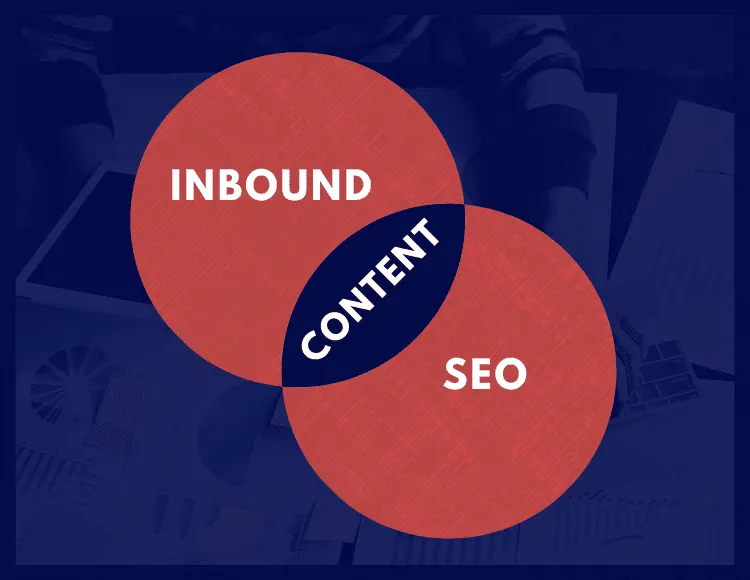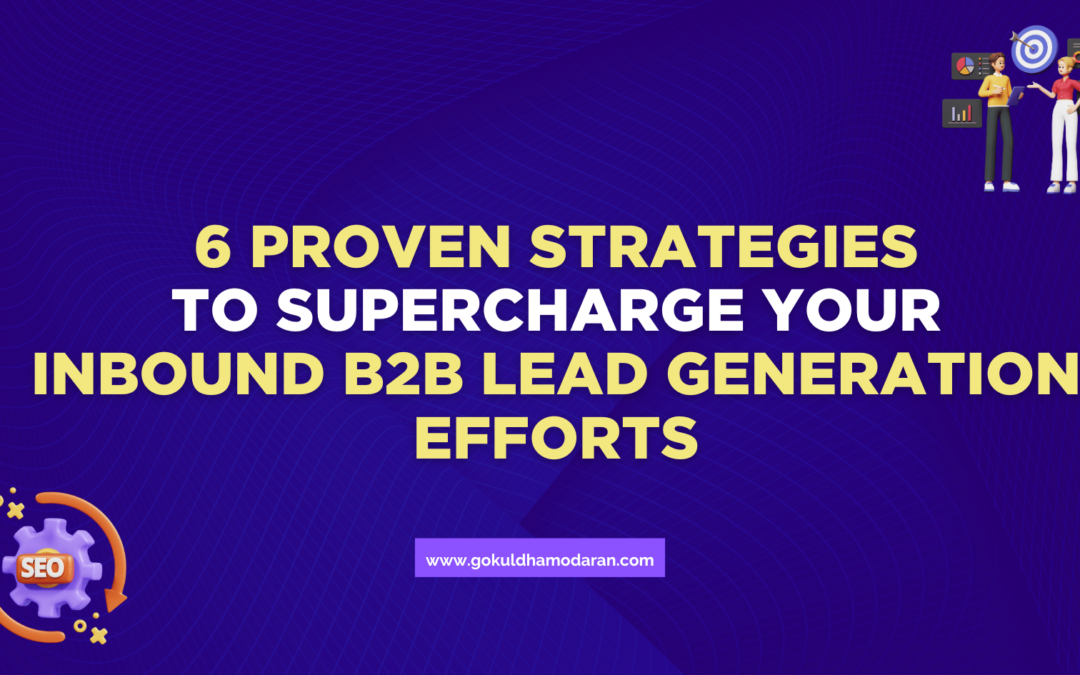Inbound B2B Lead Generation: 6 Proven Strategies to Fuel Your Growth
In today’s hyper-competitive B2B landscape, a constant influx of inbound leads is the lifeblood of any successful company. As a marketing professional or business owner, there’s nothing quite like the thrill of witnessing a surge of new leads pouring in. To help you experience that rush more frequently, we’ve curated six proven strategies that have consistently fueled impressive inbound B2B lead generation for countless organizations.
1. Leveraging SEO to Attract Your Ideal Prospects
Search engine optimization (SEO) plays a crucial role in ensuring your B2B website is prominently visible on Google when your target audience is actively searching. By identifying the specific industry terms and phrases your ideal prospects use, and creating content tailored to their needs, you can attract high-quality inbound B2B leads with strong commercial intent. This strategic approach prioritizes quality over quantity, delivering higher returns on your investment.

2. Creating Content That Truly Resonates
Developing comprehensive, informative content for your website is one of the most effective ways to stand out from your competitors and improve your rankings for those valuable commercial keywords. By offering insights that genuinely resonate with your audience, along with product demos and glowing customer testimonials, you’ll not only drive more traffic to your site but also convert a higher percentage of those visitors into precious inbound B2B leads.
3. Nurturing Leads Through the Entire Buyer’s Journey
Engaging prospects at every stage of the buyer’s journey is essential for nurturing those inbound B2B leads and ultimately converting them into loyal customers. By aligning your content strategy with current industry trends and your customers’ evolving needs, you can capture a wider audience, drive more traffic to your website, and consistently increase lead generation.
4. Building Authority Through Industry Publications
Getting featured in respected industry publications doesn’t just enhance your brand’s thought leadership – it also boosts your website’s credibility through valuable backlinks. By sharing data-driven insights tailored to your industry and engaging with relevant publications, you can expand your reach and attract inbound B2B leads who are already interested in your offerings.
5. Fostering Long-Term Relationships Through Email Marketing
Email marketing automation is a powerful tool for keeping inbound B2B leads engaged and guiding them smoothly through the sales funnel. By segmenting your audience and delivering personalized content at each stage of their buyer’s journey, you can maintain consistent interest and increase the likelihood of conversion over time.
6. Optimizing Your Website for Maximum Impact
Your website is the cornerstone of all your marketing efforts, shaping those crucial first impressions and driving inbound B2B lead generation. By crafting attention-grabbing headlines, tailored calls-to-action, and informative content that speaks directly to your target audience, you can capture their interest and motivate them to take the next step.
Conclusion:
In the ever-changing world of B2B marketing, staying ahead of the curve is essential for sustainable success. By embracing these six proven strategies, you can significantly elevate your inbound B2B lead generation efforts and drive lasting business growth. Focus on delivering genuine value through targeted SEO, resonant content creation, and strategic relationship-building tactics to attract your ideal leads and convert them into devoted customers. With dedication and a customer-centric approach, you can achieve measurable results that will leave a lasting impact on your organization’s bottom line.
FAQ
1. How to identify relevant keywords for SEO?
Conduct keyword research using tools like Google Keyword Planner, SEMrush, or Ahrefs. Analyze competitors’ keywords.
2. What content nurtures leads through the buyer’s journey?
Awareness stage: blog posts, whitepapers, infographics. Consideration stage: case studies, product comparisons, demos. Decision stage: product info, pricing guides, testimonials.
3. How to get featured in industry publications?
Identify relevant publications, pitch insightful content ideas, participate in industry events/podcasts to establish thought leadership.
4. Best practices for email marketing segmentation?
Segment by industry, company size, job role, buyer stage. Craft tailored campaigns addressing specific pain points. Automate sequences, analyze engagement metrics.
5. Optimizing website design for lead conversion?
Clean design, clear navigation, prominent CTAs. Persuasive headlines, benefit-driven copy. Strategic lead capture forms. Continuous testing and optimization.

